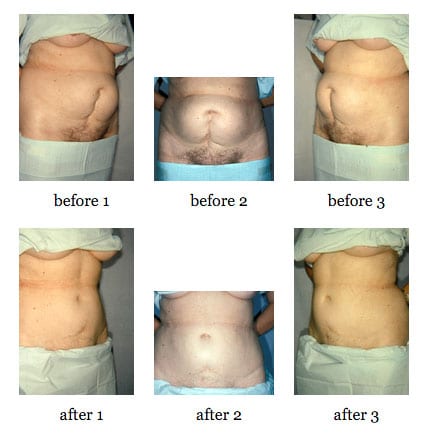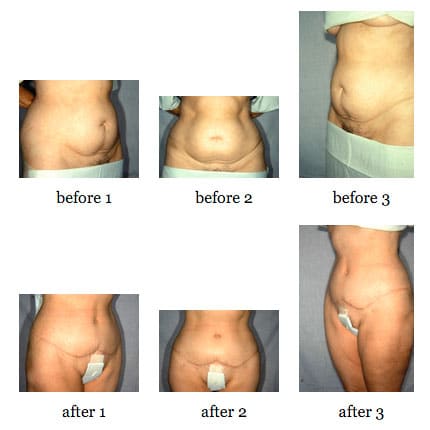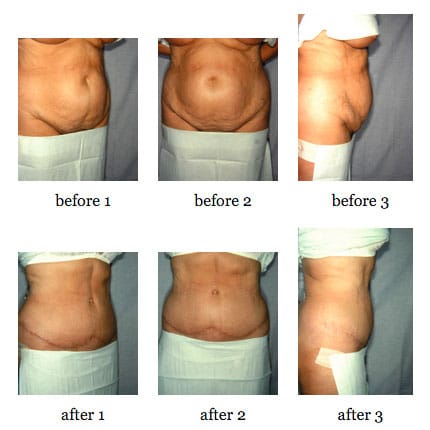Abdominoplasty or Tummy Tuck

“Every effort is made to provide the abdominoplasty at reasonable cost to the patient and still provide the necessary degree of safety. The hospital and surgical centers we use are geared toward that end. For your safety, an overnight stay is required. Your surgeons at Fairbanks Plastic Surgery have extensive experience with abdominal plastic surgery, and will give you the best results possible.” – Dr. Fairbanks
About this procedure
An abdominoplasty, or tummy tuck, is a cosmetic operation to remove excess skin and fat from the abdomen. In most cases, the surgery will also restore separated muscles, making the stomach area look more smooth and firm.
The most common causes of excess abdominal skin are pregnancy and obesity, followed by weight loss. During pregnancy, connective tissue relaxation can result in the separation of the central vertical abdominal muscles, which causes the lower abdomen to protrude. Some people call this “pooching.” No amount of exercise can correct this condition. Fortunately, an abdominoplasty can correct both issues.
During the procedure, a circular incision is made around the navel, and the navel is left in place on the abdominal wall. The abdominal skin and subcutaneous tissue is then moved down so it can be removed via a low abdominal incision. Stretch marks present in the lower abdomen are removed during this operation. The naval is then brought through a new opening at the appropriate location, to give the abdomen a normal appearance. The surgical scars required for the removal of the excess skin and fat are placed in natural lines and usually fit well within the bathing suit line.
A tummy tuck is a major operation; however, we do all we can to ensure your safety and a quick recovery. There is also a lesser procedure called a mini abdominoplasty, or mini tummy tuck. In the mini tummy tuck, skin from the upper abdomen is not brought downward, and only a lower abdominal ellipse of skin is removed, producing a lesser result. In the mini abdominoplasty, most stretch marks remain, muscle separation is not corrected, and the upper abdomen remains as it is.
The so-called “mommy make-over” refers to an abdominoplasty (“tummy-tuck”) together with other procedures, such as liposuction, breast lift, or breast enlargement. The abdominoplasty, performed by itself, is a safe procedure; however, each additional procedure adds a degree of increased risk for complications. If you are interested in a “mommy make-over,” all your questions will be answered at the time of your initial consultation.
Patients who are markedly obese develop a major amount of frontal hanging fat and skin, or an apron flap, which can cover the genitalia and the upper portion of the thighs. Even following weight loss, they can be left with a residual pannus, or panniculus, which is a hanging apron of skin and fat. This structure can only be corrected by surgical removal. The pannus must be viewed as a parasite, robbing the body of its nutrients and adding a huge capillary bed for the heart to pump blood through. It interferes with all normal physical activity, including walking, exercise, and sports activities. The pannus serves no useful function.
It is difficult for the surgeon to perform a successful cosmetic abdominoplasty on an overweight patient with a large hanging panniculus. The parasitic appendage restricts physical movement, and cries out for caloric and cardiac sustenance, making weight loss difficult. However, by removing the panniculus surgically, the patient can enjoy the restoration of physical freedoms, which can facilitate weight loss. We have removed as much as 20 pounds of useless skin and fat, to the great relief of the patients involved. By removing the panniculus surgically—called a panniculectomy—the patient can enjoy the restoration of physical freedoms, which can facilitate weight loss.
In order to undergo a cosmetic abdominoplasty, the patient must lose the weight inside the abdomen, in the bowel mesentery, and the omentum. A surgical panniculectomy, prior to weight loss, can offer a great starting point for major personal physical improvements.
Things to Avoid in Abdominoplasty or Tummy Tuck
Things to avoid in a tummy tuck, or abdominoplasty include a scar that is too high, a misplaced naval or belly button, bulges or dog ears at the end of the scar, and scar disproportion. To avoid this, the patient must trust the artistic judgement of their surgeon. You will note in the patient photographs, all scars are low, and can be well hidden in the bikini line. There are no ugly suture or staple marks, the naval is in the proper position, and looks natural, and using the lazy-W approach, there are no lateral dog ears.
Tummy Tuck Surgery Before & After Photos

Abdominoplasty Before and After

Tummy Tuck Procedure

If you have undergone an abdominoplasty or “tummy-tuck,” and achieved an unsatisfactory result. Be sure to call the office and make an appointment for a consultation/evaluation. We may be able to help you.
*All before and after photos are real patients of Fairbanks Plastic Surgery. Identifiable images are used with patient permission.
